I’ve learned that conventional corn/soy hog feed is not the best option for health, growth, and yields on a pig.
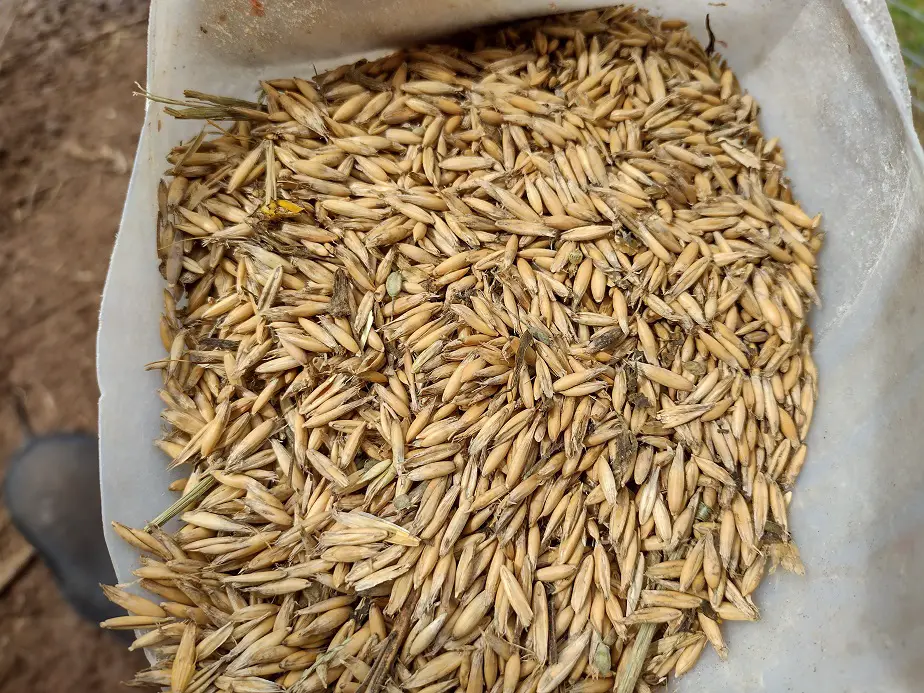
Oats
Oats have been shown to improve the growth rate of piglets and feeder pigs. The higher fiber content of oats is proven to aid in gut health, prevent ulcers, and reduce parasitic worms. That contributes to higher gains in muscle tissue.
Now, a bunch of hog farmers probably just spit out there morning coffee reading that. You see, their traditional wisdom is that oats have less energy per pound than corn so oats should retard growth compared to corn. Well, that’s not completely true.
What we have found through detailed research is that adding raw oats to a pig’s diet in relatively small amounts improves the growth rate. Usually, the inclusion amount recommended by these reports is around 5 to 10 percent of the feed mix by weight.
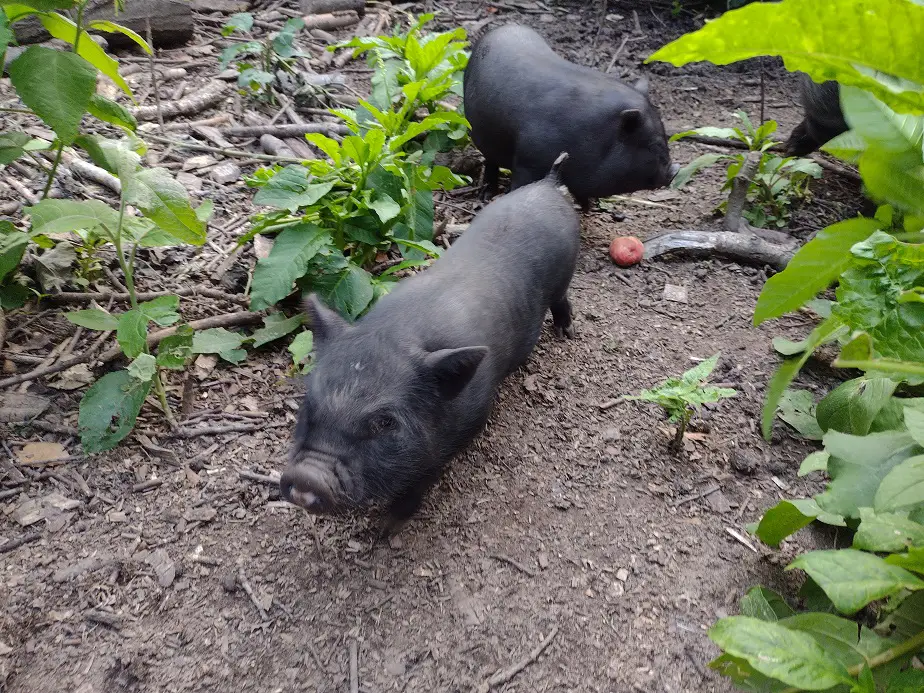
So, why are oats helpful? It’s always hard to say, but the most known function of oats is in fact the fiber. Adding a bit of fiber to the diet of commercially raised pigs is almost always shown to improve gut health, thereby increasing gains and reducing stress on an animal.
That second part, reducing stress, that’s an overlooked but incredibly important part. The fibrous hulls in oats act to slightly a;ter the pH of the gut, making it less suitable for problematic bacteria and more suitable for beneficial ones. That’s the primary way gut health improves and feed absorption increases.
Just to clarify: Oats with the hulls have extra fiber. De-hulled oats have little fiber but are still less dense than corn. Both are used in feeds. I prefer oats with the hulls.
Here’s a few points from a report on feeding oats (with hulls) by Iowa State University
- At 5 to 15% of the diet, minimize diarrhea and digestive problems
- Oats protect against constipation in sows
- Reduces ulcers in growing pigs
- Source: Feeding Small Grains to Swine
Here’s highlights from a report on adding de-hulled oats to starter pig feed
- Improved feed efficiency when fed 5 and 10 percent oats
- Offset feed costs due to added efficiency
- 7 percent greater gains with the same weight of feed
- Source: The Effect of Oats in Starter Feed
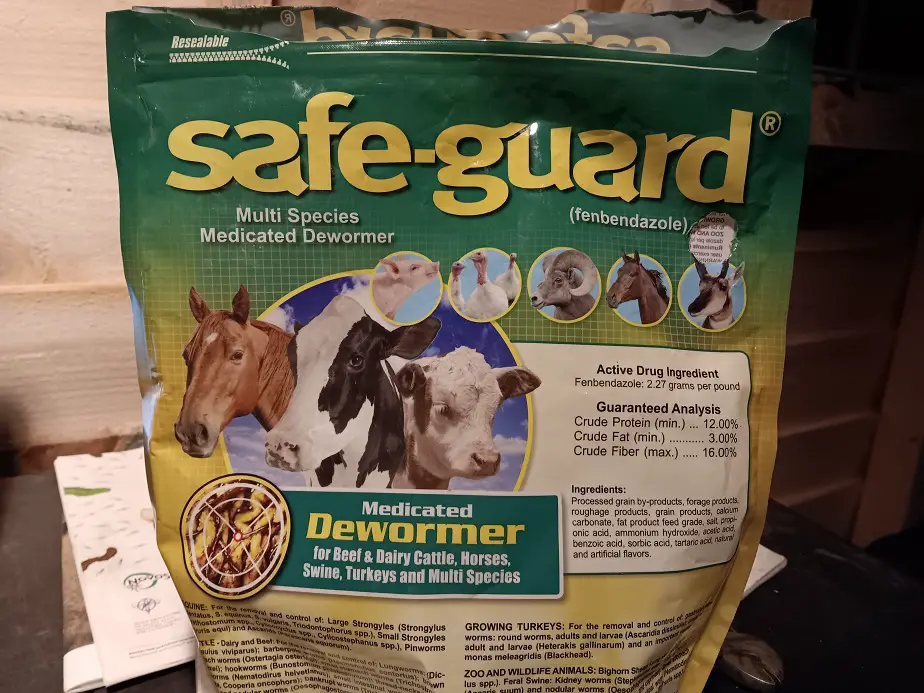
One thing you need for pigs, no matter your raising system, is a parasitic worm treatment. The best swine dewormer is Fenbendazole. It’s known by the brand name Safeguard. Safeguard is available as a medicated corn/alfalfa pellet. It’s the only way I can worm my pigs since they won’t stand still for an injection of Ivermectin. It’s easy and cheap.
- There is a stronger pellet for swine only. Here it is on Amazon
- There is a weaker pellet for general barnyard livestock, including swine. Here it is on Amazon.
I use the multi-species version because it’s what’s available in my local store and I can use it for my chickens too. It’s the most effective swine wormer and the easiest to administer. I use it on all weaned piglets and adults twice a year. Don’t go without it.
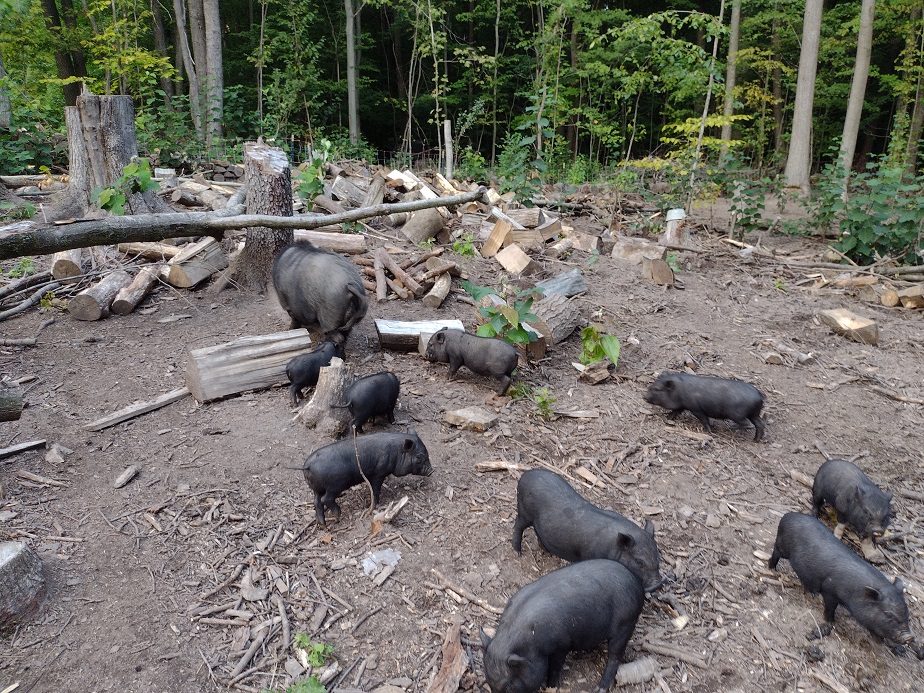
Fermented Feed
Fermented feed is where is at for our operation. Fermented feed vs regular dry feed is like the difference between putting premium gas in a sports car instead of regular. Fermented feed increases feed digestibility, increases the amount pigs can eat, and inoculates the gut with probiotics and good bacteria.
It actually makes a big difference in growth, health, and performance. Once I got into fermented feed, I’ll never go back to dry feed. The pigs just do better. You can ferment any feed or feed ingredient and get an improvement of feed value and digestible protein.
I used to ferment a regular hog feed. When times were hard, I switched to a cheap all-stock which was poor as a dry feed but when fermented, it was acceptable as a finisher/adult feed. Now, we ferment whole grains for pig feed.
Most fermented feed, either pelleted or a mash, is made into a slurry that can be scooped or poured out for the pigs. It needs a good bit of water to get e good ferment.
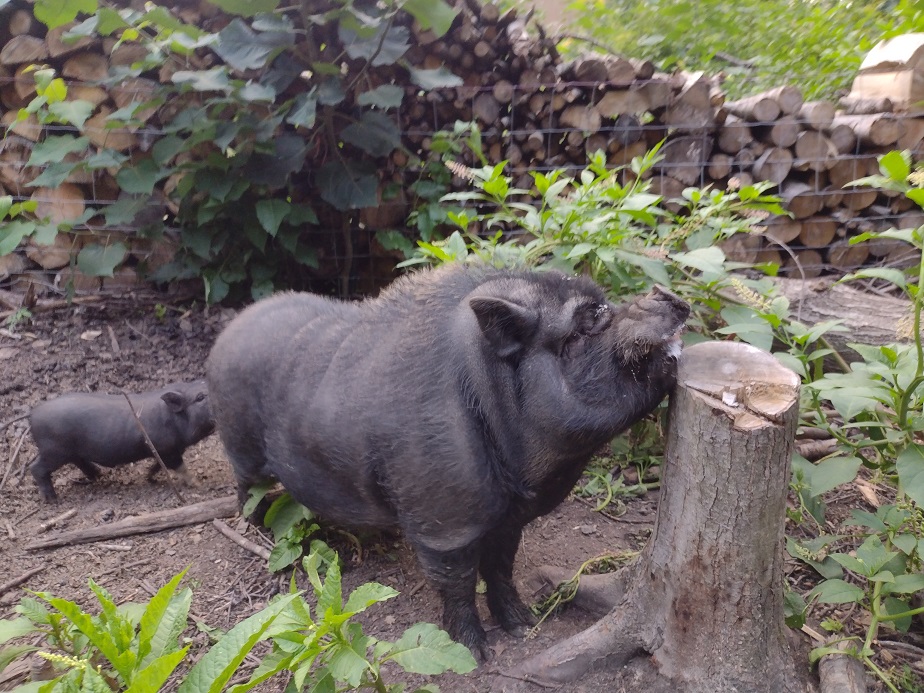
The last point I’ve discovered is that fermented feed greatly reduces the stink of pig manure. Where I am, I have to keep that in mind because my neighbors can cause a fuss if they want to.
Here’s a few excerpts from an article in the Journal of Animal Science and Biotechnology.
- “In a summary of 4 trials comparing fermented liquid feed with dry feed they reported a 22.3% improvement in weight gain and a 10.9% improvement in feed efficiency. A benefit associated with feeding diets in a liquid form is the fact that weaner pigs are provided with water and feed simultaneously”
- “Feeding fermented liquid feed has been shown to shift the conversion of tryptophan in the hind gut towards the production of indole instead of skatole resulting in a reduction in the concentration of skatole in the backfat of fattening boars and thus reduce boar taint.”
- Source: Fermented Liquid Feed for Pigs
- Increases muscle color of redness and significantly reduces muscle moisture loss rate (juicier meat).
- increases aromatic amino acids such as aspartic acid, glutamic acid, and alanine (tastier meat).
- Increases monounsaturated fatty and polyunsaturated fat content (healthier meat).
- Source: Effect of Fermented Corn/Soybean Meal on Carcass and Meat Quality of Grower Pigs
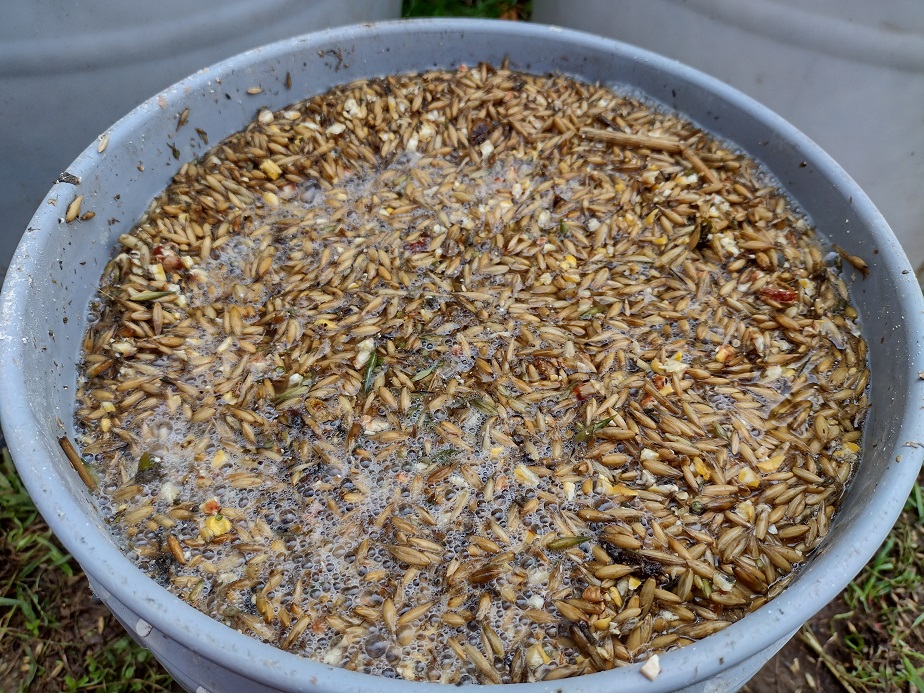
Fermented Whole Grains
Fermented whole grains is a great way to both improve pig growth and save on feed costs. Fermenting grains in water for 2-3 days increases the digestibility to a point that’s higher than finely ground grains. It adds 25-40 percent more overall protein, and doubles the lysine content.
It also adds B vitamins and vitamin A. Besides that, it has the same benefits as regular fermented feed. This is what makes up most of our pig’s diet. I buy corn and oats for less than half-price of hog feed, and that helps us to save money while growing and fattening pigs well.
- High increases in Protein
- Massive increases in lysine content in most grains
- Significantly increases gain and reed conversion ratio of piglets
- Source: Fermented corn, a superior and storable animal feed
- Source: Effect of fermentation on the nutritive value of maize
- Source: Evaluation of the protein quality and available lysine of fermented cereals
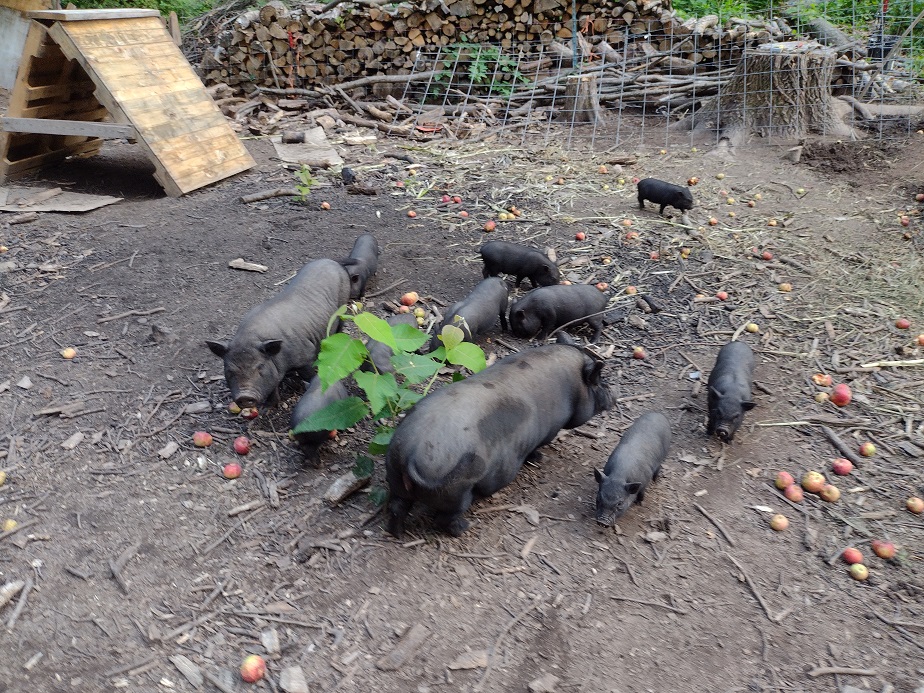
Alfalfa Hay
An old Iawo pig farmer ponce said alfalfa hay was his secret to better, bigger pigs. I have that written down somewhere. Despite many farmers laughing at the idea, the data shows that the old farmer was right.
Alfalfa has a ton of things going for it. First, it’s got chlorophyll, which is what makes it green. Chlorophyll improves overall health and immunity, has a direct positive impact on gut health, and is full of antioxidants. That all together makes it pretty good, but there’s more.
Did you know that a diet high in antioxidants actually increases animal growth and daily gains by removing oxidative stress in an animal? It’s true. By increasing antioxidants, you reduce physical stress. Less stress improves everything.
Alfalfa has very high levels of crude protein, essential minerals, and other beneficial bioactive compounds.
- Improves sow rebound after farrowing
- Increases average litter size
- Helps maintain body condition of older pigs
- Improves feed-to-gain ratio
- Increases daily gains of feeders
- Source: Alfalfa supplementation improves growth, reproductive performance, health condition and meat quality of pigs
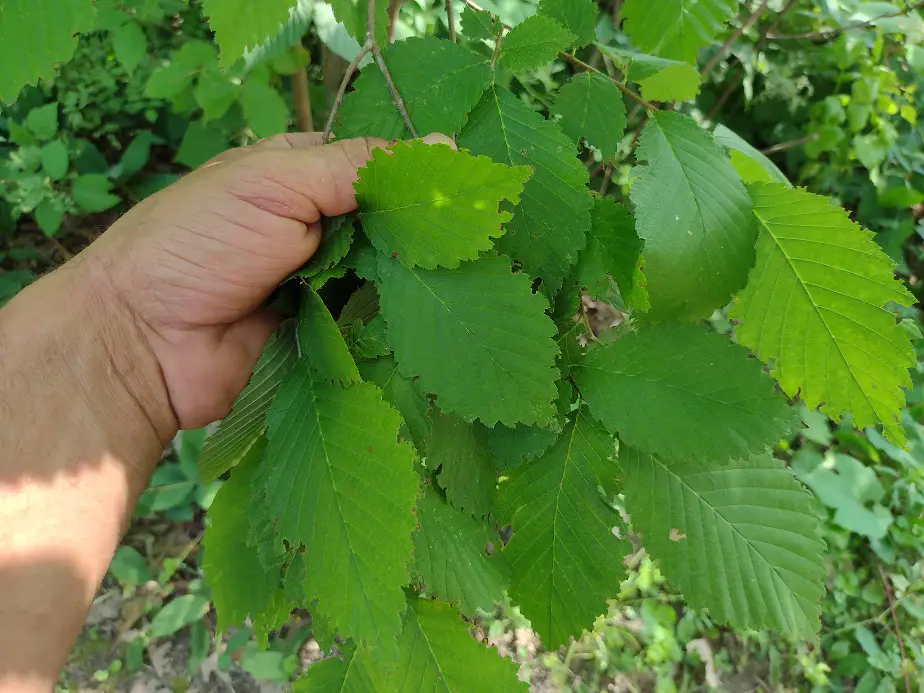
Fresh Pasture Greens
This works similar to the alfalfa. My experience undeniably shows that a good handful of fresh pasture greens daily improves a pig’s health, stress, and growth. For many reasons, a lot having to do with improved gut health, fresh greens benefit pigs.
I’m talking about things like grass, garden weeds, chickory, clover, or whatever tender greens you have on hand. They are chuck full of all the essential vitamins for pigs, and the vitamins are much more bioavailable. They have a good supply of bioavailable minerals too. Even if the forage is low in energy, a little helps.
I am of the opinion that tender greens improve lactation in pigs, and improve early piglet health. It also helps pigs deal with general health problems, and infections and improves the meat. I can say for sure that a diet including greens darkens meat and increases marbling content.
If you go crazy with vegetative forage, your pigs will grow slower. That’s because they won’t get as much energy and protein in a day. To grow pigs fast, limit green vegetation to 20 percent of less of the total diet.
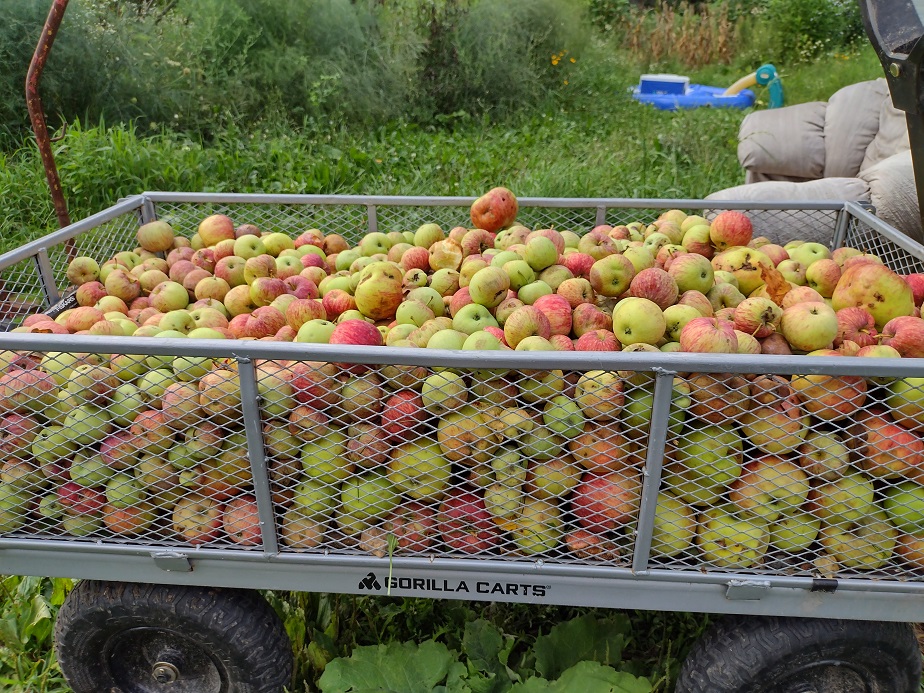
Apples
Apples are about as energy-rich as wheat, on a dry matter basis. But, they are about 80 percent water. I live in apple country. There are more commercial apple orchards in a 30-mile radius here than anywhere else in the country. Almost everyone has some apple trees.
We have 8 apple trees and they are primarily for pig feed. It’s common knowledge here that pigs can be fed a small amount of apples and see an improvement in average daily gains compared to a diet of only dry commercial hog feed.
I do know people who fatten pigs primarily on apples. Apple finished pork does have a different, very pleasant flavor. And, if you have a bunch of apple trees, why not?
But, if you feed a lot of apples, exceeding about 15-20 percent of the total diet, you should expect to see reduced gains compared to a well-run commercial system. Apples do improve the pH of the gut and lessen the prevalence of E.coli and salmonella in the manure.
They are high in anthocyanins, which are a potent antioxidant. They have beneficial fiber. Apples are good for overall health and reducing stress. Just don’t go heavy on them if you are going to shoot for maximum performance.
Fermented apples and fermented apple pummace are known to improve the daily gains of a pig when fed in moderation. They also have a positive effect on meat and fat quality. Basically, all fermented things seem to do this. I have a few buckets of apples fermenting right now.
Source: Effects of apple pomace-mixed silage on growth performance and meat quality in finishing pigs

Mulberry Leaf
Mulberry leaf, specifically of the white mulberry, is a super supplement to pig feed. It’s nearly unrivaled in its antioxidant effects and in its vegetative protein. White mulberry leaf is commonly 16 to 25 percent crude protein and it can be higher.
White mulberry, once again, improves gut health and boosts immunity. It has shown increased average daily gains in feedlot trials. This is presumed to be from a combination of the improvement of gut health, and the significantly lower levels of oxidative stress in the animals.
White Mulberry leaf is shown to improve the quality, flavor, and texture of meat. It also causes the fat to resist oxidation after processing by increasing the oxidative stability of lipid tissues. with inclusion rates up to 10 percent, there are no negative attributes identified.
Several studies have shown that around 2-5 percent inclusion of white mulberry in a commercial hog diet causes a notable increase in average daily gains. Not all studies show that improvement. It seems to be at its highest function when fed fresh (not dried, crushed, or steamed), and for more than 30 days.
I read a recent report that showed a 4 percent inclusion of white mulberry in feed resulted in needing 5 percent less overall feed due to an increased feed efficiency and nutrient absorption. White mulberry is perhaps the best additive for pig feed, especially for show pigs.
That’s why I’m working on cultivating it and figuring out a practical harvest and pelleting method for it. I plan on offering pelleted white mulberry leaf for sale sometime in the summer of 2024.
Sources:
- Dietary mulberry leaf powder affects growth performance, carcass traits and meat quality in finishing pigs
- Mulberry leaf powder as feed for finishing pigs
- Dietary supplementation with flavonoids from mulberry leaves improves growth performance and meat quality, and alters lipid metabolism of skeletal muscle in a Chinese Hybrid Pig
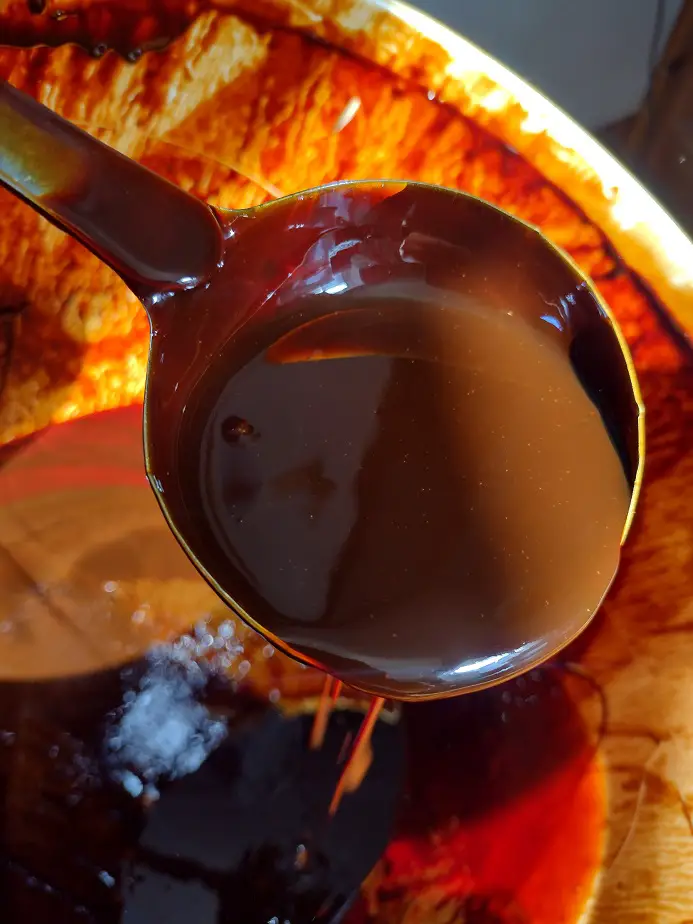
Molasses
Molasses is added to other feedstuffs to increase the palatability of undesirable feeds, increase the appetite of pigs, and increase the energy value of a feed. Molasses shows increased growth in piglets when fed up to 20 percent of the total diet.
According to studies from India, molasses can be used as the primary energy source in pig feed, with the addition of fiber, oils, vitamins, and protein That one shocked me. I’ve also heard about farmers in the Philippines raising hogs on a diet of 50 percent molasses with chopped hay or tree leaves.
Molasses is great at adding fat to pigs. It adds rich sugars and will not reduce feed intake ability of pigs even at a high inclusion rate. MOlasses it perhaps the best way to increase the energy of a feed without increasing its volume because it gets absorbed between feed particles.
I use molasses in both the feed and water when a sow is too tired after birthing to eat or drink. I also use molasses to help fatten pigs between 6 and 7 months. I can definitely see a difference in fat by adding two or three cups of molasses to a bucket of grain or chopped grass over a month’s time.
Sources:
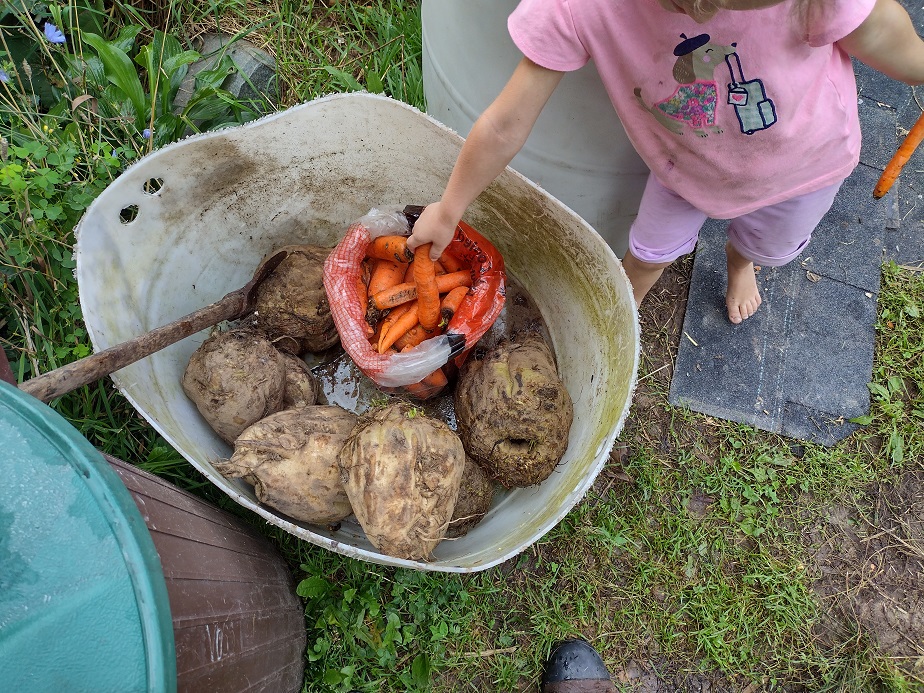
Sugar Beet
Sugarbeet is a secret of the north for feeding pigs. It’s perhaps the best of the vegetative, non-grain feeds, and it’s a superb choice for a perennial pig pasture crop. Sugar beet improves the grade of marbling in pigs compared to a regular corn/soy diet.
In its raw form, it boosts the gut health a good bit. Sugar beet has a lot of crude protein in the top, and about 20 percent sugar in the root. A patch of sugar beet will help to put weight on a pasture-raised pig, and it’s one of the few things that will grow well in further northern climates.
When fermented, sugar beets and sugar beet pulp show an impressive increase in both muscle gains and intramuscular fat. I fed fermented sugarbeet to my pigs last winter. Even though it was a harsh winter, they did better than I had expected.
Older pigs, such as common in pastured heritage meat breeds, show a notable increase in feed conversion rate and overall growth when fed a diet of 10 percent sugar beet along with a standard hod feed.
Source: Influence of Sugar Beet Pulp Supplementation on Pigs’ Health and Production Quality
Silage
Silage is a poor feed for pigs by itself. But, as a supplement, it’s very beneficial. Sileage improves the gut health of a pig better than raw, green fodder. By improving the gut health, the animal will be overall more healthy and be better able to utilize the nutrients in its feed.
In small amounts, it can replace commercial feed in production pigs. Pastured pigs show better results with higher amounts of silage and will grow and gain better with access to silage daily. Ensiling green fodder greatly increases the digestibility and somewhat increases the protein content of the vegetation.
Silage will help a true pasture pug to fatten, and it is a feed option for people or places that can’t grow decent grains or other energy/protein crops. It is primarily used in poorer countries, and on my farm. I ensure grass, tree leaves, and green corn for winter pig feed.
When finished, then mixed with molasses, it’s a decent feed for the right breeds. A little silage given daily or so will help keeps pigs healthy.
Sources:
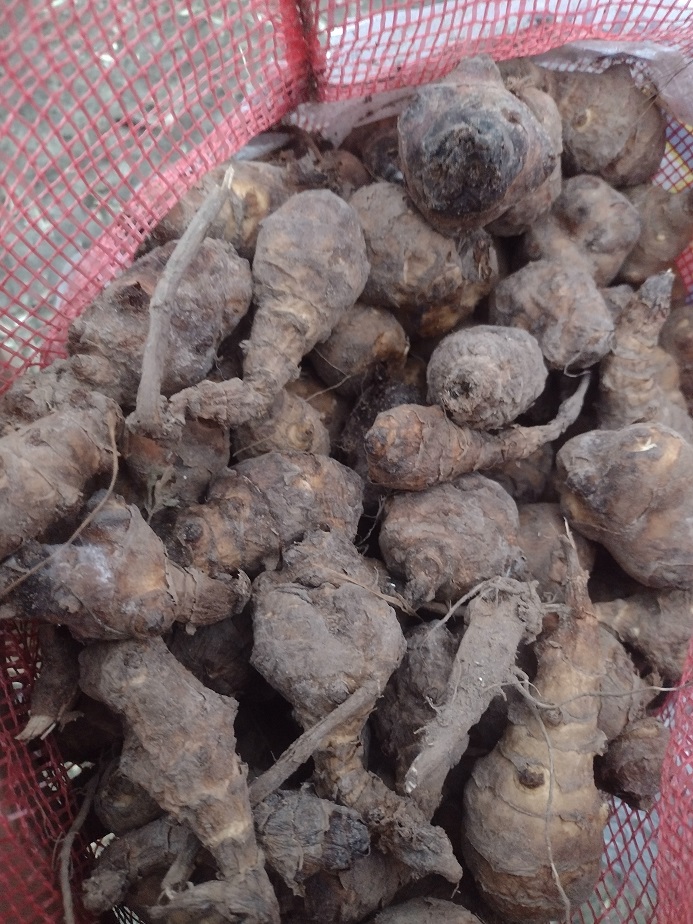
Jerusalem Artichoke
Jerusalem Artichoke is another of my preferred feed ingredients. My pigs always do a bit better, healthwise and in growth, when fed a moderate amount of fresh tubers. Raw jerusamem artichoke has more probiotic benefits than most fermented materials.
Jerusalem artichoke dramatically alters the pH of the gut to a level that greatly reduces instances of intestinal worms and harmful bacteria including listeria and E.coli. It also tends to cause an increase of beneficial bacteria, significantly soothing and improving digestion.
It’s even sold in a pelleted form as a gut boost to livestock. It works to prevent colic and similar digestive problems. In the dry form, it can be added to a regular pig feed without significantly changing the amount of feed ingested. When raw, the total amount of feed ingestion is reduced a bit.
Another awesome function of the tuber is that it greatly reduces the amount of skatole ( a foul smelling pheromone in uncastrated boars). That means the manure won’t smell as bad and instances of boar taint will be reduced.
Overall, jerusalem artichoke consistently shows an increase in gains and feed conversion ratio when fed at around 10 percent of total diet.
Jerusalem artichoke is the primary feed item we grow and sell.
Sources:
- Feeding Jerusalem artichoke (Helianthus tuberosus) to pigs
- Feeding Jerusalem artichoke reduced skatole level and changed intestinal microbiota in the gut of entire male pigs
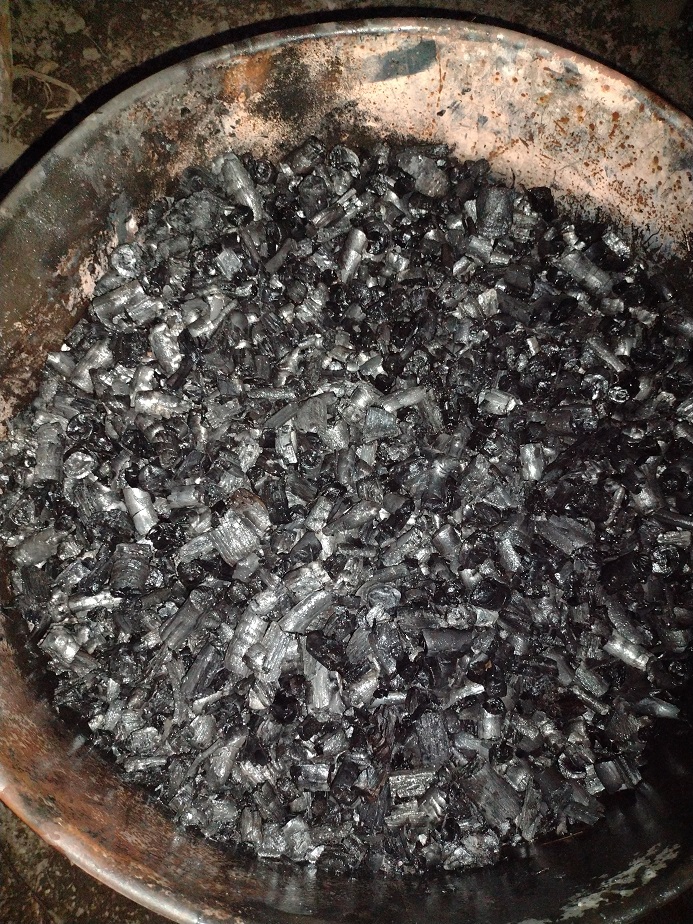
Biochar
Biochar is a high-temperature-produced charcoal used for agricultural purposes. Raw biochar, not inoculated with anything, has impressive results and benefits on growing pigs.
Biochar reduces the impact of residual glyphosate, thereby improving animal gut-health and feed absorption and behavior. It also is known to absorb a high amount of the toxic by-products of harmful bacteria within the gut. It’s even able to absorb mycotoxins from bad molds in feed.
By improving so many points of digestion it helps keep up the growth rate of pigs, especially those raised outdoors.
Biochar is finicky to produce for livestock use. You really want it with a low level of volatile compounds like wood tar. I’m working on getting the art right and will be taking orders for biochar this winter.
Sources:
Vitamin Mix
Vitamins are essential to pigs. A lack of vitamins causes pigs to grow slowly. Vitamins are one of he things people forget about when they are making their own pig feeds. Vitamins are cheap and easy to come by.
In the winter when there are no greens to graze, I give my pigs a vitamin mix. It really helps keep up growth in the winter.
Mineral Blend
Mineral blend also called pre-mix, almost always benefits pigs raised on a home-made feed recipe. Most pigs just don’t get what the need to keep up the maximum growth without extra added minerals. All commercial pig feed comes with minerals and vitamins added.
I add a little minerals to my pig’s feed and I add a bit more in the winter when they’re not rooting and foraging around. I have seen that it makes a big difference in overall pig growth, especially in winter.
Related Articles:
